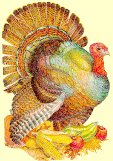

Control statements for the MVT Sort/Merge facility follow the same conventions as the other utility programs. Column 1 of the control statement must be blank, unless the statement has been given a title, which is usually not the case. Therefore, the text begins in column 2 of the statement. The parameters of the statement must not extend beyond column 71. If the control statement will not fit on a single line, break the statement at a comma and continue the statement on the next line, beginning in any column between columns 2 and 16. A continuation indicator character is not required in column 72 of any statement being continued onto the next line.
There is one strange restriction: The record length of the file(s) to be sorted or merged need to be 18 bytes or longer.
Parameters controlling the operation of a SORT or MERGE are submitted on a single control statement. The parameters that may be specified are:
FIELDS=(position,length,format,sequence,...)or
FIELDS=(position,length,sequence,...),FORMAT=formatwhere
FILESZ=x (Optional)
SKIPREC=z (Optional; not permitted for MERGE)
EQUALS | NOEQUALS
CKPT
SORT FIELDS=(11,1,CH,A,1,10,CH,A)Sorts on two control fields – 1 byte beginning in byte 11 of the input record and 10 bytes beginning in byte 1 of the input record; both control fields will be sorted in ascending sequence and contain EBCDIC character data.
SORT FIELDS=(11,1,A,1,10,A),FORMAT=CHThis alternative format specifies the same sort as the first example.
SORT FIELDS=(5,4,PD,D,96,20,CH,A),SKIPREC=500,EQUALSSorts on two control fields
MERGE FIELDS=(1,7,CH,A)Merges two or more input files on a single control field
The characteristics of the records in the input file(s) are specified on the RECORD statement:
RECORD TYPE={F|V},LENGTH=value
In order to use an alternating collating sequence, specify AQ as the data format in the SORT or MERGE control fields statement and include an ALTSEQ statement to specify the alternate collating sequence to be used:
ALTSEQ CODE=(fftt,fftt,...,fftt)Where
ff is the hexadecimal representation of the character
whose position is to be changed and tt is the hexadecimal
representation of the position to which it is to be moved.
The sort control statements are followed by an END statement to signal that all sort control input has been processed:
END
The SORT utility is controlled via standard JCL:
//TESTSORT JOB (SETUP), // 'TEST SORT', // CLASS=A, // MSGCLASS=A, // REGION=1024K, // MSGLEVEL=(1,1) //SORT EXEC PGM=SORT,REGION=512K,PARM='MSG=AP' //SYSOUT DD SYSOUT=* //SYSUDUMP DD SYSOUT=* //SYSPRINT DD SYSOUT=* //SORTLIB DD DISP=SHR,DSN=SYS1.SORTLIB //SORTOUT DD SYSOUT=*,DCB=(BLKSIZE=80,RECFM=F) //SORTWK01 DD UNIT=2314,SPACE=(CYL,(5,5)) //SORTWK02 DD UNIT=2314,SPACE=(CYL,(5,5)) //SORTWK03 DD UNIT=2314,SPACE=(CYL,(5,5)) //SORTWK04 DD UNIT=2314,SPACE=(CYL,(5,5)) //SORTWK05 DD UNIT=2314,SPACE=(CYL,(5,5)) //SORTWK06 DD UNIT=2314,SPACE=(CYL,(5,5)) //SYSIN DD * SORT FIELDS=(40,10,CH,A) RECORD TYPE=F,LENGTH=(80) END /* //* SORT FIELDS=(06,06,CH,A) //SORTIN DD * ..... data to be sorted ..........Parameters controlling the overall performance of the Sort/Merge program are submitted using the PARM= parameter on the execution Job Control Card. The parameters that may be specified are:
| PARM= | Description |
|---|---|
| BALN | Utilizes the Balance Tape or Direct Access Technique for sort work distribution. |
|
CORE= | Main Storage Allocation, where |
| CRCX | Utilizes the Criss Cross Direct Access Technique for sort work distribution. |
| DIAG | Creates detailed diagnostic messages for use in solving severe Sort/Merge problems. |
|
MSG=AC AP CC CP NO |
Sort message output, where:
AC specifies all messages to the console AP specifies all messages to SYSLOG CC specifies critical messages to the console CP specifies critical messages to SYSLOG NO specifies no messages are to be output The default is NO, which will result in no messages. If you receive a non-zero return code from the sort, you should resubmit the sort with a PARM=’MSG=AP’ so that diagnostic messages will be produced. |
| OSCL | Utilizes the Oscillating Tape Technique for sort work distribution. |
| POLY | Utilizes the Polyphase Tape Technique for sort work distribution. |